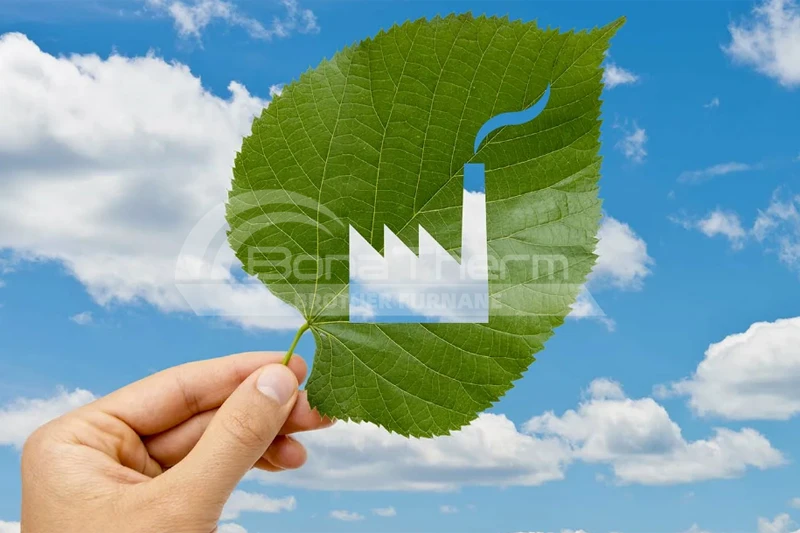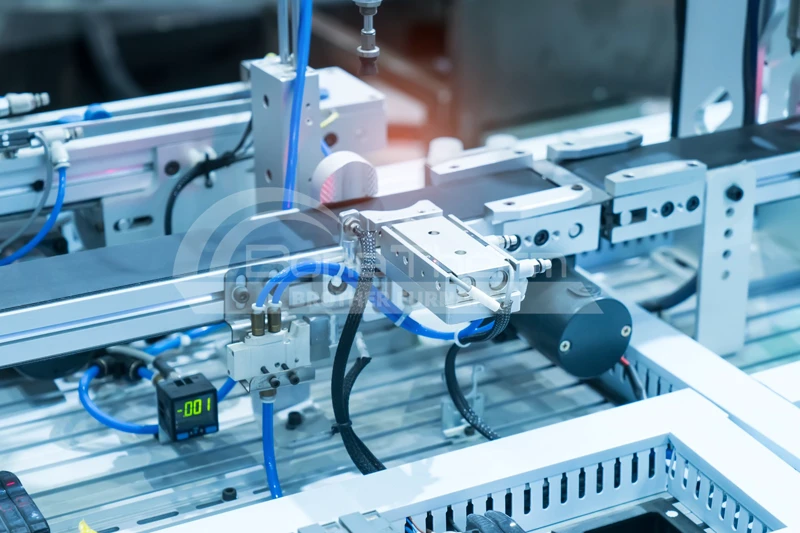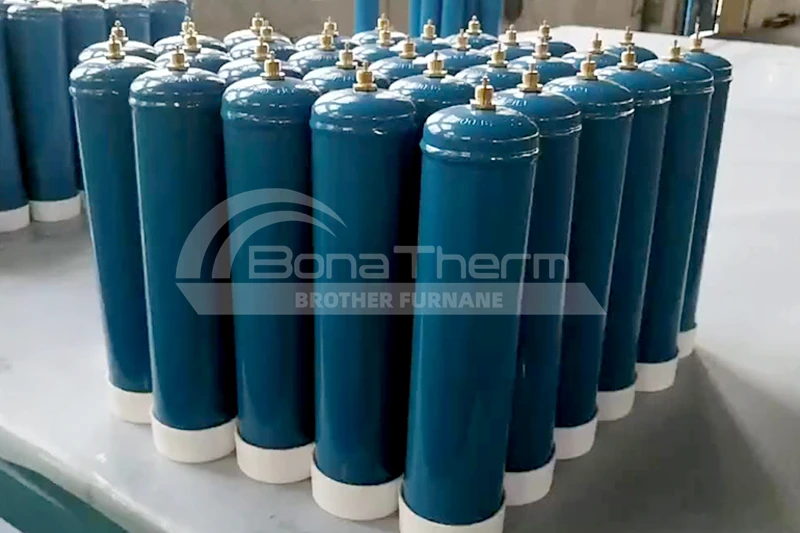Protective Atmosphere Furnaces: Revolutionizing Quality Heat Treatment
Protective atmosphere furnace from Brother Furnace is a sophisticated piece
of heat treatment equipment that ensures material preservation during thermal
processes by creating controlled environments.
As industries continue to evolve, the demand for precision in heat treatment has skyrocketed. Historically, traditional furnaces were susceptible to oxidation and unwanted reactions, leading to compromised material quality.
However, advancements in controlled atmosphere heating technology have paved the way for furnaces that maintain the integrity of treated materials by controlling the gases surrounding them during heating cycles.
The introduction of protective atmospheres—whether neutral, active, or reducing—allows for precise control over the conditions in which metals and other materials are treated.
Today, industrial heat treatment solutions using this protective atmosphere furnace play an essential role in industries such as aerospace, automotive, and
electronics, where material quality is paramount.
Importance of Material Preservation in Heat Treatment
One of the main challenges in traditional heat treatment methods is the exposure of materials to ambient air during the heating process. This can lead to oxidation, decarburization, and other chemical reactions that compromise the strength, surface finish, and overall quality of the material. Such reactions can weaken metals, making them less durable and prone to failure.
In contrast, protective atmosphere furnaces prevent these unwanted reactions by using gases like nitrogen, hydrogen, or argon to shield the material from oxygen.
These gases, often called neutral atmospheres, help in oxidation prevention, ensuring that the materials retain their desired properties. For instance, when using a sintering furnace technology in the production of ceramics or metals, the precise control of the atmosphere within the furnace is essential to achieving uniform material characteristics.
Similarly, in processes such as annealing furnace systems, where the goal is
to soften or refine the internal structure of a material, controlling the
furnace atmosphere ensures the best results without compromising the material’s
surface.
Key Features of Protective Atmosphere Furnaces
To fully appreciate the benefits of protective atmosphere furnaces, it’s important to understand the key features that make them so effective:
● Atmosphere Control Systems: The heart of any active atmosphere heat treatment process lies in the ability to accurately control the type and concentration of gases inside the furnace. Brother Furnace’shigh-temperature furnaces are equipped with sensors and feedback mechanisms to maintain optimal conditions throughout the treatment cycle.
● Temperature Uniformity and Precision: Consistent heating is crucial in quality heat treatment. Advanced furnaces provide superior temperature distribution, ensuring that all parts of the material are treated uniformly.
● Advanced Sealing Mechanisms: To prevent unwanted air from entering the furnace and disrupting the protective atmosphere, these furnaces utilize advanced sealing technologies that ensure airtight environments.
● Automation and Process Control Capabilities: Our customizable heat treatment furnaces are integrated with automation systems that allow for precise control over every aspect of the heat treatment process, from temperature ramping to atmosphere adjustments.
● Energy Efficiency Features: In today’s environmentally conscious world, the
energy efficiency of a furnace is a key consideration. Energy-efficient heat
treatment furnaces are designed to minimize energy waste while maximizing
output, making them a cost-effective solution for manufacturers.
Benefits for Industrial Applications
The adoption of protective atmosphere furnaces has revolutionized the heat treatment industry, providing a host of benefits for manufacturers. Among these benefits are:
● Enhanced Product Quality and Consistency: By preventing oxidation and other unwanted reactions, these furnaces ensure that treated materials meet exacting standards. This results in products with improved surface finishes and mechanical properties.
● Reduced Material Waste and Rework: In traditional heat treatment processes, significant portions of material can be lost to oxidation or other reactions, leading to costly rework. A furnace for metal treatment that operates under a controlled atmosphere can significantly reduce waste, leading to higher production yields.
● Improved Surface Finish and Mechanical Properties: Whether using a neutral atmosphere furnace or another type of controlled atmosphere furnace, the precise conditions ensure that the material's surface finish is smooth and free from unwanted blemishes caused by oxidation.
● Increased Production Efficiency: Automated systems and enhanced temperature
control mean that heat treatment cycles are more efficient, reducing downtime
and increasing throughput.
● Cost Savings in the Long Run: While the initial investment in a protective atmosphere furnace may be higher than traditional systems, the long-term savings on material waste, energy consumption, and reduced rework make these furnaces a cost-effective solution for many industries.
How to Choose the Right Furnace for Your Needs
Selecting the right customizable heat treatment furnace depends on several factors, each of which must be carefully considered to ensure optimal performance and return on investment.
● Assessing Your Specific Heat Treatment Requirements: The type of materials you work with and the specific heat treatment processes you require will guide your furnace selection. For example, if you need to perform sintering, then a sintering furnace with advanced atmosphere control may be the best choice.
● Considerations for Furnace Size and Capacity: The scale of your production operations will influence the size and capacity of the furnace you need. Annealing furnace systems come in various sizes, from compact models for smaller operations to large, industrial-scale furnaces for high-volume production.
● Selecting Appropriate Protective Atmospheres: Different materials require
different protective gases to prevent unwanted reactions. Understanding which
gases are best for your materials is crucial in maintaining product quality.
● Evaluating Energy Efficiency and Operating Costs: Energy efficiency is a key factor to consider when selecting a furnace. The energy demands of a furnace can significantly impact operating costs, so choosing a high-temperature furnace with advanced energy-saving features can lead to long-term savings.
● Importance of After-Sales Support and Maintenance: Finally, it’s essential to consider the support and maintenance services offered by the manufacturer. A reliable supplier like Brother Furnace provides not only high-quality products but also the after-sales support necessary to keep your furnace running smoothly.
Brother Furnace: Your Reliable Partner
In summary, protective atmosphere furnaces represent a significant advancement in quality heat treatment technology. By providing superior material preservation, enhanced product quality, and cost-saving benefits, these furnaces are a critical component of modern manufacturing processes.
As industries continue to evolve, so too will the role of advanced furnace technology in improving the efficiency and quality of heat-treated products.
Brother Furnace specializes in offering a wide range of industrial heat
treatment solutions tailored to meet your specific needs. Whether you're looking
for a protective atmosphere furnace, a furnace for metal treatment, or a
customizable heat treatment furnace, our team of experts is ready to help you
find the right solution for your business.
For personalized advice and guidance, feel free to contact us. We are here to support you with the best heat treatment solutions for your production needs.
